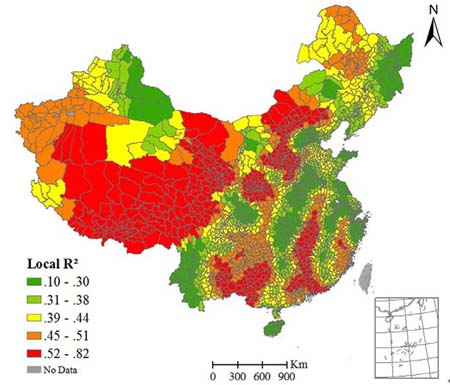Potential determinants of the Incidence of Hand, Foot, and Mouth Disease in China
Hand, Foot, and Mouth Disease (HFMD) becomes a serious infectious disease in China in recent year. More than one million of disease cases were reported yearly since 2008. Although in most cases, the disease is mild and self, severe clinical presentations may occur, particularly among children aged five years and younger. Currently, there is no vaccine or antiviral treatment specifically for HFMD. The epidemic, clinical, and pathogenetic features of HFMD have been studied extensively. However, potential factors influencing the incidence of HFMD remain little understood.
In a latest study published in the PLoS ONE by Dr. HU Maogui, Dr. WANG Jinfeng, from Institute of Geographic Sciences and Natural Resources Research, Chinese Academy of Sciences, Dr. LI Zhongjie from Chinese Center for Disease Control and Prevention, and their colleagues, spatial association of HFMD incidence with several potential determinants (including child population density, average temperature, average temperature difference, average relative humidity, and monthly precipitation) are studied to examine potential spatial variations in the assumed relationship between these factors and HFMD incidence.
The research results show that children population density and climate factors are potential determinants of the HFMD incidence in most areas in China. The strength and direction of association between these factors and the incidence of HFDM is spatially heterogeneous at the local geographic level, and child population density has a greater influence on the incidence of HFMD than the climate factors.
 |
| Local R2derived from multivariate GWR model with independent variables children population density, month precipitation, average temperature, average relative humidity, and average temperature difference.(Imaged by HU Maogui) |
The full citation of the paper:
Hu M, Li Z, Wang J, Jia L, Liao Y, et al. (2012) Determinants of the Incidence of Hand, Foot and Mouth Disease in China Using Geographically Weighted Regression Models. PLoS ONE 7(6): e38978.
Download attachments: